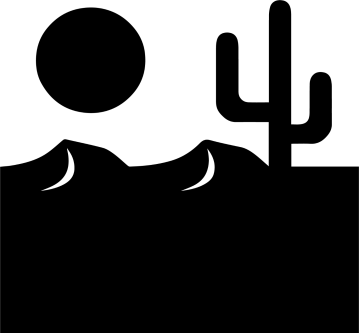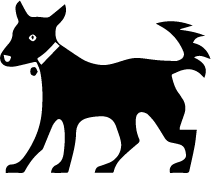"I have always been a literary painter, thank goodness, like all the decent painters."
—Walter Richard Sickert (1860–1942)
The connection between writing and image-making holds great significance to me as both crafts can emphasise perception and observation as crucial elements of storytelling. As a writer who also works as a graphic designer, I strive to express in my stories what I observe by looking at shapes, lines, colours and textures through paintings, sculptures and photography.
Where painter Walter Richard Sickert 1 used literary elements to create vivacious visual stories such as his Vernet’s Dance Hall paintings (Figure 1 & 2), as well as the unusual angles of the Old Bedford (Figure 3), I similarly find myself using the same interdisciplinary tools to write short stories, aiming to paint worlds with my words as wittingly and as ordinary as Sickert did with his visual work.
Figures 1 & 2: Walter Sickert, Au Café Concert, Vernet's Dance Hall, 1920, oil on canvas, 71 x 48 cm, Private collection
Figure 3: Walter Sickert, The Old Bedford, Vernet's Dance Hall, 1894 - 1895, oil on canvas, 76.3 cm x 60.5 cm, Purchased by the Walker Art Gallery in 1947
Liz Rideal, professor of painting at Slade School of Fine Art stated in a 2021 article2 that Walter Richard Sickert "invented ways to paint his particular way of seeing" underscoring the notion that artistry entails not merely seeing what is before us but actively shaping the process of creation.
And so when I am scrolling through a selection of images of cyanobacteria3 that photographer Risk Hazekamp (they/them) has transferred to me; pinching to zoom in on my too-small laptop, cocking my head this way and then that way, squinting my eyes to a close, truly, I am hoping for these grainy images of scum and bubbles to trigger a story.
What is it that I see? Which elements of the images will I choose to weave into a story, versus the parts I will leave behind? What insights will I glean about these cultures that've been given free rein to fatten on gelatine and nitrogen, in as much as cyanobacteria can have free will? After some mulling over, I decide that the images are all together in a state of undress, therefore intimate, unnerving and silent.
I settle on three images out of the 40 images in the PDF; Seven (Figure 4) Fourteen (Figure 5) and Sixteen(Figure 6) —using all remaining images as a mental backdrop. All of Hazekamp's works are intriguing in their own right, number Seven, however, especially piques my interest for little other reason than how the bacteria has been allowed to spread in such a way that reminds me of a landscape giving way to a sigh.
The relief looks like a creature with pouted mouth pointing towards the top of a page. Pareidolia; the phenomenon is called: seeing what is not there in inanimate objects. In other words, humans finding their place and ways of being in the world, in things, in extraterrestrial entities all the same—is it a wonder that our green dystopian alien never looks that far from us, or the things we know; say the dog-like Demodogs in Stranger Things season 4, the cockroach head in James Cameron's Aliens, or any illustration of early science fiction works by Edward Gorey, Warwick Goble or Frank Frazetta and William Stout in the 1970s.
Figure 4: Risk Hazekamp in collaboration with Synechocystis sp. PCC 6803, analogue B&W photo negatives dissolved by Cyanobacteria, 2022
Figure 5
Figure 5
 I gulp up Hazekamp's artwork which feeds me hints of science fiction imagery that I've been heavily immersed in the last few years for the ways this genre can astutely express what some people fear the most "The Other". These visuals straddle the line between complete foreignness and my unshakable conviction that what I behold is either an intense close-up of a minuscule yet formidable entity or a bird's-eye view of an entirely distinct planet—a realm adorned with towering structures, a tapestry of queer existence with dwellings of architectural marvel reflecting the unique stories and identities of whatever creature I conjure up.
I gulp up Hazekamp's artwork which feeds me hints of science fiction imagery that I've been heavily immersed in the last few years for the ways this genre can astutely express what some people fear the most "The Other". These visuals straddle the line between complete foreignness and my unshakable conviction that what I behold is either an intense close-up of a minuscule yet formidable entity or a bird's-eye view of an entirely distinct planet—a realm adorned with towering structures, a tapestry of queer existence with dwellings of architectural marvel reflecting the unique stories and identities of whatever creature I conjure up.
As I mentioned at the beginning of this text, whatever interpretations, stories, speculations and linguistic connections I concoct are shaped through the lens of the multitude of identities I encompass both personal and professional. Consequently, in looking for things that trigger my imagination in Hazekamp's work, I see a convergence of shapes, forms, patterns and textures coalescing into imagery reminiscent of xenomorphs, cyborgs, aquatic creatures, and various otherworldly beings.
Indeed literature finds its rightful place, complemented by other artistic mediums and modes of thought that breathe life into otherwise flat narratives. Such exploration challenges the traditional notions ingrained in my understanding of personhood and autonomy. I cannot help but find gratitude in the ability to allow both visual and verbal languages to dissect, intersect and inject new perspectives beyond the boundaries of my craft or the confines imposed by my identities and biases, allowing for a richer and more expansive intellectual and visual landscape.
Hazekamp is a photographer by all accounts. One that reflects on the intricate discussions surrounding the biological reality of gender; the perennial debate of nature versus nurture (which, some may argue, has become a cliché). But the images Hazekamp has sent me are not photographs, at least not in the traditional sense, they defy the definition of the medium. The subjects of these images are cyanobacteria, microscopic organisms that, to some exhibit adiaphorous properties, but are considered toxic by others.
In Hazekamp's process, gelatine coated film is immersed into a large jar filled with cyanobacteria in water. These bacteria eat the gelatinous film which Hazekamp then develops in a dark room—effectively resulting in the bacteria capturing an image of itself. Through Hazekamp, I learn that there are theories floating about whether or not cyanobacteria can feel or not, whether they can possess some kind of intelligence and indeed may possess free rein.
These discussions hold significance in Hazekamp's practice as they navigate their role as both subject and photographer, grappling with autonomy and self-identification. The 1998 September issue of the Dutch newspaper 'De Volkskrant' quotes Hazekamp as being "unable to choose; man or woman, boy or girl"— it's a subject that they have explored through their work by taking photos of themselves posing in traditional male clothing and embodying masculine gestures.
So strong are these gender-bending visuals that Hazekamp shares that they have run into issues with art galleries before—some vocalising that Hazekamp's work had taken on too much of an extreme political stance and therefore refusing to further collaborate with them. Hazekamp has undergone a sort of transformative process in their practice, from dissecting photographic gender ideals to discussing meta perspectives of who and what becomes a subject of image making.
During a lecture at Sint Lucas Antwerpen we both held just a few months ago, Hazekamp presented a thought-provoking critique on photography, shedding light on its historically exclusionary nature. Their work has evolved beyond questioning who is in front of or behind the camera to having discussions about who holds the autonomy to even decide to be captured on film.
In John Rieder's book, 'Colonialism and the Emergence of Science Fiction'4, he reveals a pattern of colonial behaviour that is sustained within photography, namely exoticism and the continuation of the 'Savage' trope. To exemplify this point, Rieder presents an image taken by former Navy officer and photographer Alonzo Gartley depicting a Native Hawaiian man who has been staged to look like he is engaged in fish hunting.
The photograph is laden with racist connotations that according to Rieder perpetuate the subject as an "anonymous un-self-conscious representative of a type of society or a stage of human development". People, as the subject of the aforementioned photograph according to European colonisers were not considered to have autonomy to their own image much less to capture themselves. With all the craft's history in mind, it matters in rethinking our ideas of people and beings in photography.
"Among the many kinds of artists, it may be that there are some who are hybrid. Some, that is to say bore deeper and deeper into the stuff of their own art; others are always making raids into the lands of others. Sickert it may be is among the hybrids".
—Virginia Woolf in 'Walter Sickert: In Conversation' (1934)
Hazekamp's role in deconstructing orthodox ideas of who society says we are is central in all the work that can be seen, even in these seemingly abstract explorations of cyanobacteria. But when I come to write about Hazekamp, gender and the future, like the writer Virginia Woolf said in describing Walter Richard Sickert's work5, I too find words an impure medium.
I know that Hazekamp's image-making work both in its present concrete state and clear gender-bending past say more than any metaphor or anthropomorphic element I could utilise to tie all these topics together. Therefore I wrestle, grapple and make do with plain language, focusing on what I see, what I want to see, as elaborated at the beginning of this text, cocking my head from side to side, attempting, as Sickert once said, to become a literary painter.
